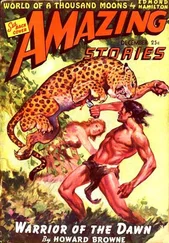From ornithology labs east and west of the Mississippi, graduate students were sent on grisly night missions to transmitter towers to recover the carcasses of red-eyed vireos, Tennessee warblers, Connecticut warblers, orange-crowned warblers, black-and-white warblers, ovenbirds, wood thrushes, yellow-billed cuckoos… the lists became an increasingly thorough compendium of North American birds, including rare species like the red-cockaded woodpecker. Especially prominent were birds that migrate, and especially those that travel at night.
One is the bobolink, a black-breasted, buff-backed plains songbird that winters in Argentina. By studying its eyes and brains, bird physiologist Robert Beason has detected evolutionary traits that unfortunately turned lethal in the age of electronic communications. Bobolinks and other migrants carry built-in compasses—particles of magnetite in their heads, with which they orient to the Earth’s magnetic field. The mechanism to switch them on involves their optics. The short end of the spectrum—purples, blues, and greens—apparently triggers their navigational cues. If only longer red waves are present, they grow disoriented.
Beason’s observations also suggest that migrating birds evolved to fly toward light in foul weather. Until electricity, this meant the moon, which would put them out of harmful weather’s way. Thus, a pulsating tower bathed in a red glow whenever fog or blizzard blots out everything else is as seductive and deadly to them as wailing Sirens to Greek sailors. With their homing magnets befuddled by a transmitter’s electromagnetic fields, they end up circling its towers, whose guy wires become the blades of a giant bird blender.
In a world without humans, the red lights will blink off as broadcasts cease; a billion daily cellular conversations will disconnect, and several billion more birds will be alive a year later. But as long as we’re still here, transmission towers are only the beginning of the unintended carnage human civilization perpetrates on feathered creatures we don’t even eat.
A different kind of tower—frameworks of steel lattice averaging 150 feet tall, spaced every 1,000 feet or so—marches the length and breadth and diagonally across every continent save Antarctica. Suspended between these structures are aluminum-clad high-tension cables bearing millions of sizzling volts from power plants to our energy grids. Some are three inches thick; to save weight and cost, all are uninsulated.
There’s enough wire in North America’s grid alone to reach the moon and back, and nearly back again. With the clearing of forests, birds learned to perch on telephone and power lines. As long as they don’t complete a circuit with another wire or with the ground, they don’t electrocute themselves. Unfortunately, the wings of hawks, eagles, herons, flamingos, and cranes can span two wires at once, or brush an uninsulated transformer. The result is no mere shock. A raptor’s beak or feet can melt right off, or its feathers can ignite. Several captive-bred California condors have died exactly this way on being released, as have thousands of bald and golden eagles. Studies in Chihuahua, Mexico, show that new steel power poles act like giant ground wires, so that even smaller birds end up on the piles of dead hawks and turkey vultures below.
Other research suggests that more birds die by simply colliding with power lines than from being zapped by them. But even without webs of live wires, the most serious traps for migratory birds await in tropical America and Africa. So much land there has been cleared for agriculture, much of it for export, that each year there are fewer roosting trees to ease the journey, and fewer safe wetlands where waterfowl can pause. As with climatic change, the impact is hard to quantify, but in North America and Europe, the numbers of some songbird species have fallen by two-thirds since 1975.
Without humans, some semblance of those wayside forests will return within a few decades. Two other major perpetrators of songbird loss—acid rain, and insecticide use on corn, cotton, and fruit trees—will end immediately when we’re gone. The resurgence of bald eagles in North America after DDT was banned bodes hopeful for creatures that cope with residual traces of our better life through chemistry. However, while DDT is toxic at a few parts per million, dioxins become dangerous at just 90 parts per trillion —and dioxins may remain until the end of life itself.
In separate studies, two U.S. federal agencies estimate that 60 to 80 million birds also annually end up in radiator grilles or as smears on windshields of vehicles racing down highways that, just a century ago, were slow wagon trails. High-speed traffic would end when we do, of course. However, the worst of all man-made menaces to avian life is totally immobile.
Well before our architecture tumbles, its windows will mostly be gone, and one reason will be repeated pounding from inadvertent avian kamikazes. While Muhlenberg College ornithologist Daniel Klem was earning his doctorate, he enlisted suburban New York and southern Illinois residents to record the numbers and kinds of birds crashing into that post—World War II home builder’s icon, the plate glass picture window.
“Windows are not recognized as obstacles by birds,” Klem tersely notes. Even when he stood them in the middle of fields, free of surrounding walls, birds failed to notice them until the final, violent second of their lives.
Big birds, little birds, old or young, male or female, day or night—it didn’t matter, Klem discovered over two decades. Nor did birds discriminate between clear glass and reflective panes. That was bad news, given the late-20th-century spread of mirrored high-rises beyond city centers, out to exurbs that migrating birds recall as open fields and forests. Even nature park visitor centers, he says, are often “literally covered with glass, and these buildings regularly kill birds that the public comes to see.”
Klem’s 1990 estimate was 100 million annual bird necks broken from flying into glass. He now believes that 10 times that many—1 billion in the United States alone—is probably too conservative. There are about 20 billion total birds in North America. With another 120 million taken each year by hunting—that same pastime that snuffed mammoths and passenger pigeons—these numbers begin to add up. And there is still one more scourge that man has wreaked on birdlife, one that will outlive us—unless it runs out of birds to devour.
Wisconsin wildlife biologists Stanley Temple and John Coleman never needed to leave their home state to draw global conclusions from their field research during the early 1990s. Their subject was an open secret—a topic hushed because few will admit that about one-third of all households, nearly everywhere, harbor one or more serial killers. The villain is the purring mascot that lolled regally in Egyptian temples and does the same on our furniture, accepting our affection only when it pleases, exuding inscrutable calm whether awake or asleep (as it spends more than half its life), beguiling us to see to its care and feeding.
Once outside, however, Felis silvestris catus drops its subspecies surname and starts stalking as it reverts to being F. silvestris —wild cat—genetically identical to small native wildcats still found, though seldom seen, in Europe, Africa, and parts of Asia. Although cunningly adapted over a few thousand years to human comforts—cats that never venture outdoors generally live far longer—domestic cats, Temple and Coleman report, never lost their hunting instincts.
Possibly, they sharpened them. When European colonists first brought them, American birds had never before seen this sort of silent, tree-scaling, pouncing predator. America has bobcats and Canadian lynx, but this fecund invasive feline species was a quarter-size version—a frightening, perfect fit for the enormous population of songbirds. Like Clovis Blitzkriegers, cats killed not only for sustenance, but also seemingly for the sheer pleasure of it. “Even when fed regularly by people,” Temple and Coleman wrote, “a cat continues hunting.”
Читать дальше











